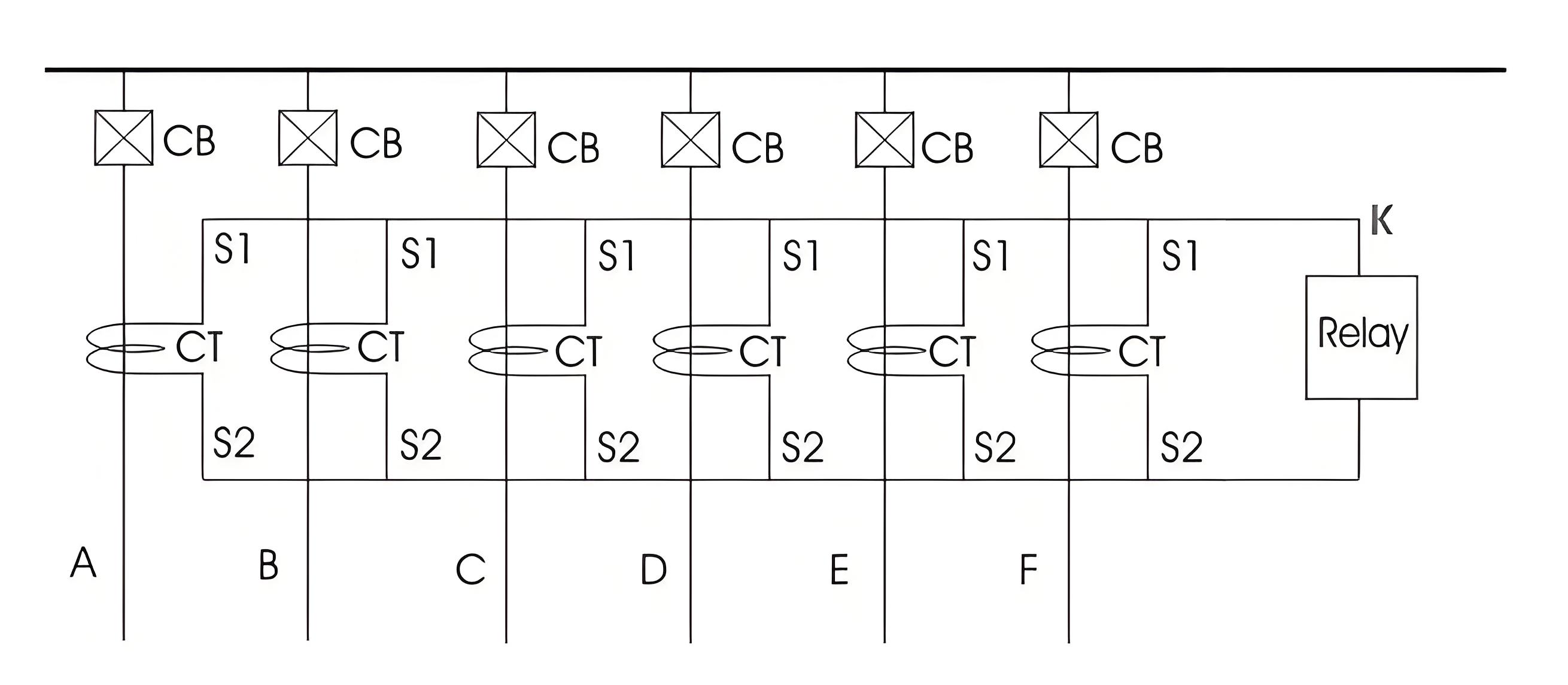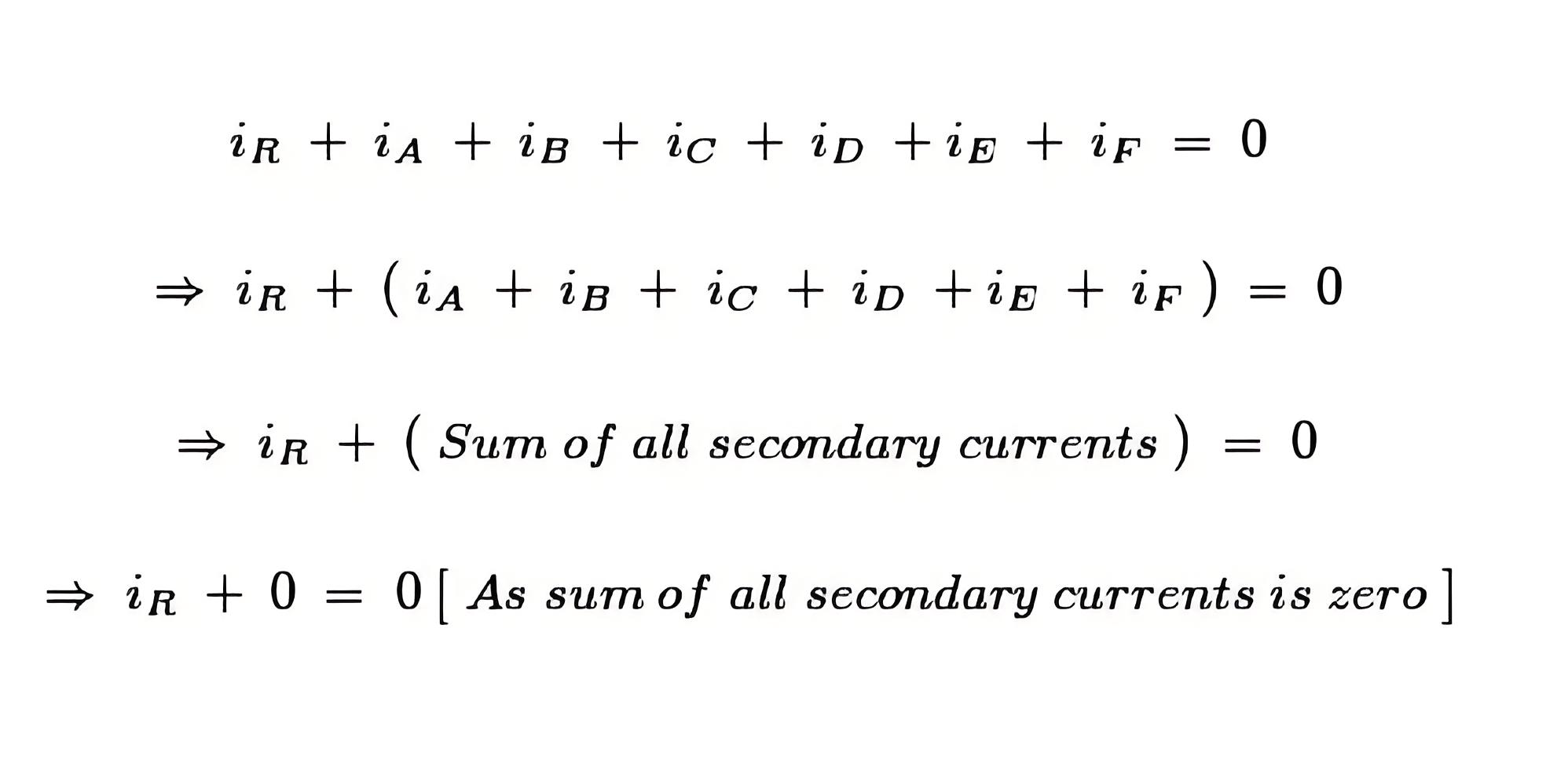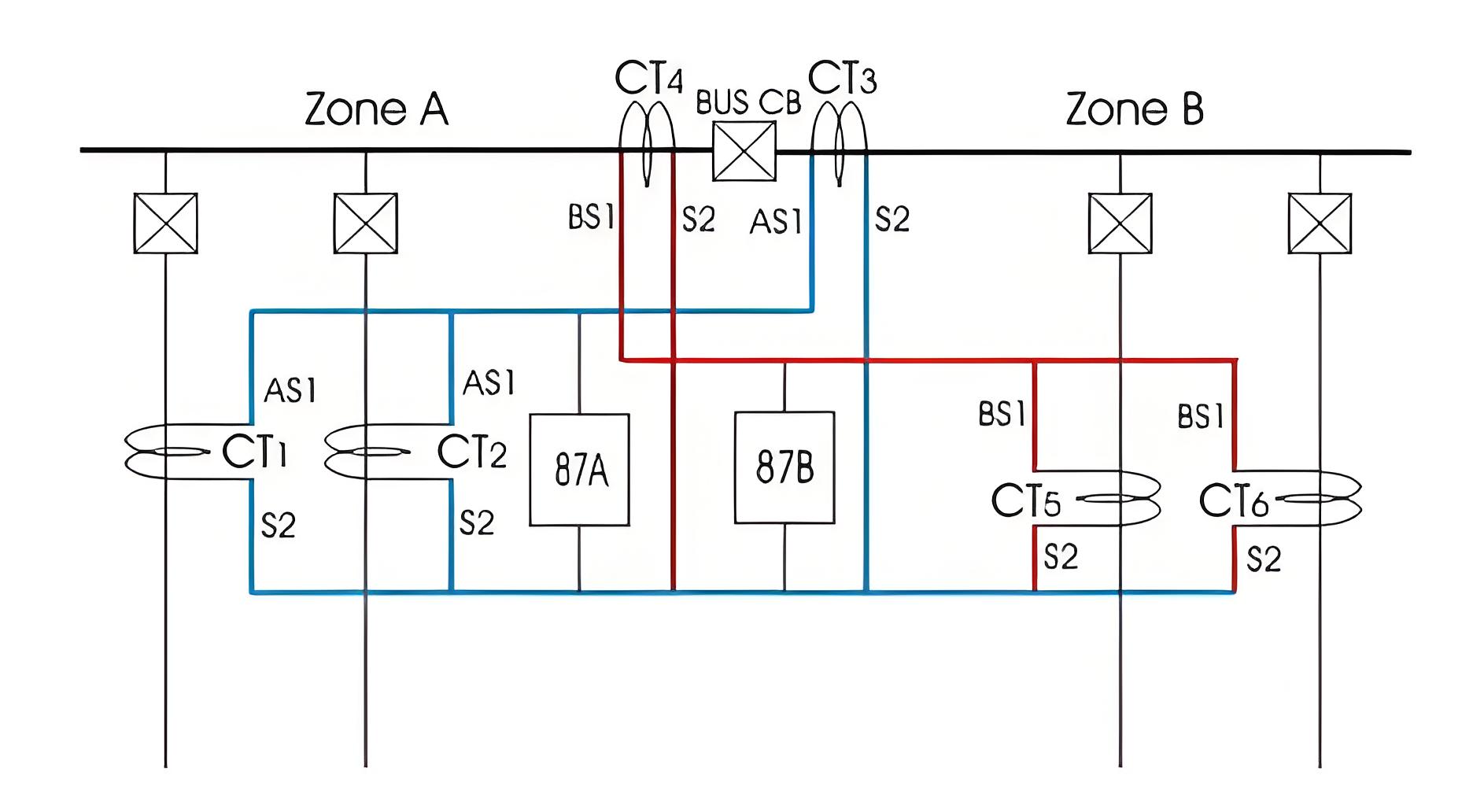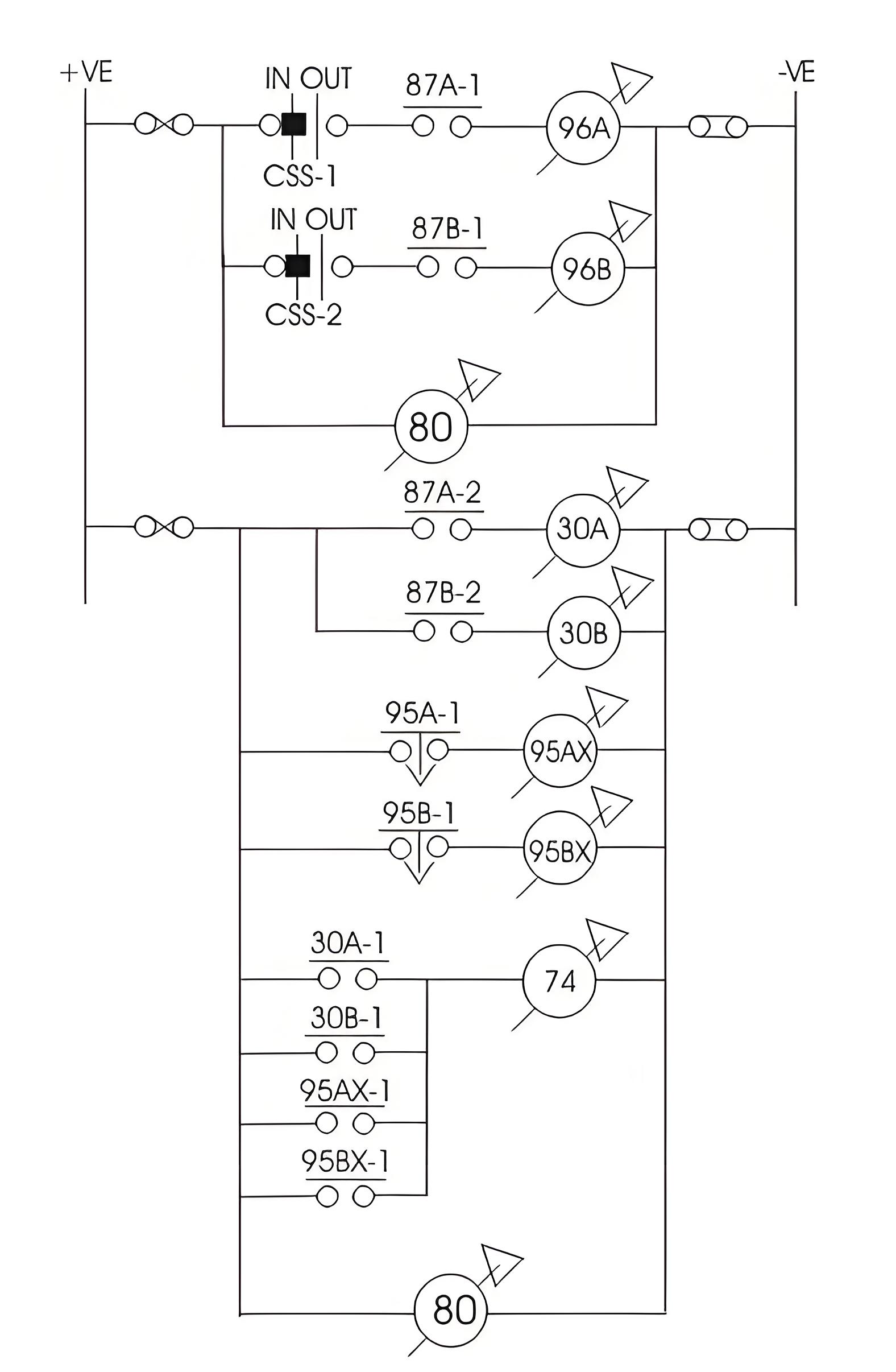Busbar Differential Protection
Busbar Differential Protection Definition
Busbar differential protection is a scheme that quickly isolates faults by comparing currents entering and leaving the busbar using Kirchoff’s current law.
Current Differential Protection
The scheme of busbar protection, involves, Kirchoff’s current law, which states that, total current entering an electrical node is exactly equal to total current leaving the node.Hence, total current entering into a bus section is equal to total current leaving the bus section.
The principle of differential busbar protection is very simple. Here, secondaries of CTs are connected parallel. That means, S1 terminals of all CTs connected together and forms a bus wire. Similarly S2 terminals of all CTs connected together to form another bus wire.A tripping relay is connected across these two bus wires.

Here, in the figure above we assume that at normal condition feed, A, B, C, D, E and F carries current IA, IB, IC, ID, IE and IF.Now, according to Kirchoff`s current law,
Essentially all the CTs used for differential busbar protection are of same current ratio. Hence, the summation of all secondary currents must also be equal to zero.

Now, say current through the relay connected in parallel with all CT secondaries, is iR, and iA, iB, iC, iD, iE and iF are secondary currents.Now, let us apply KCL at node X. As per KCL at node X,
So, it is clear that under normal condition there is no current flows through the busbar protection tripping relay. This relay is generally referred as Relay 87. Now, say fault is occurred at any of the feeders, outside the protected zone.
In that case, the faulty current will pass through primary of the CT of that feeder. This fault current is contributed by all other feeders connected to the bus. So, contributed part of fault current flows through the corresponding CT of respective feeder. Hence at that faulty condition, if we apply KCL at node K, we will still get, i R = 0

That means, at external faulty condition, there is no current flows through relay 87. Now consider a situation when fault is occurred on the bus itself.At this condition, also the faulty current is contributed by all feeders connected to the bus. Hence, at this condition, sum of all contributed fault current is equal to total faulty current.
Now, at faulty path there is no CT. (in external fault, both fault current and contributed current to the fault by different feeder get CT in their path of flowing).The sum of all secondary currents is no longer zero. It is equal to secondary equivalent of faulty current.Now, if we apply KCL at the nodes, we will get a non zero value of i R.

So at this condition current starts flowing through 87 relay and it makes trip the circuit breaker corresponding to all the feeders connected to this section of the busbar.
As all the incoming and outgoing feeders, connected to this section of bus are tripped, the bus becomes dead.This differential busbar protection scheme is also referred as current differential protection of busbar.
Sectionalized Busbar Protection
During explaining working principle of current differential protection of busbar, we have shown a simple non sectionalized busbar. But in moderate high voltage system electrical bus sectionalized in than one sections to increase stability of the system.
It is done because, fault in one section of bus should not disturb other section of the system. Hence during bus fault, total bus would be interrupted.Let us draw and discuss about protection of busbar with two sections.
Here, bus section A or zone A is bounded by CT 1, CT2 and CT3 where CT1 and CT2 are feeder CTs and CT3 is bus CT.

Voltage Differential Protection
The current differential scheme is sensitive only when the CTs do not get saturated and maintain same current ratio, phase angle error under maximum faulty condition. This is usually not 80, particularly, in the case of an external fault on one of the feeders. The CT on the faulty feeder may be saturated by total current and consequently it will have very large errors. Due to this large error, the summation of secondary current of all CTs in a particular zone may not be zero.
So there may be a high chance of tripping of all circuit breakers associated with this protection zone even in the case of an external large fault. To prevent this maloperation of current differential busbar protection, the 87 relays are provided with high pick up current and enough time delay.The greatest troublesome cause of current transformer saturation is the transient dc component of the short circuit current.
This difficulties can be overcome by using air core CTs. This current transformer is also called linear coupler. As the core of the CT does not use iron the secondary characteristic of these CTs, is straight line.In voltage differential busbar protection the CTs of all incoming and outgoing feeders are connected in series instead of connecting them in parallel.
The secondaries of all CTs and differential relay form a closed loop. If polarity of all CTs are properly matched, the sum of voltage across all CT secondaries is zero. Hence there would be no resultant voltage appears across the differential relay. When a buss fault occurs, sum of the all CT secondary voltage is no longer zero. Hence, there would be current circulate in the loop due to the resultant voltage.
As this loop current also flows through the differential relay, the relay is operated to trip all the circuit beaker associated with protected bus zone. Except when ground fault current is severally limited by neutral impedance there is usually no selectivity problem when such a problem exists, it is solved by use of an additional more sensitive relaying equipment including a supervising protective relay.

Importance of Selective Isolation
Modern systems need to isolate only the faulty sections to minimize power interruptions and ensure quick fault clearance.
The Electricity Encyclopedia is dedicated to accelerating the dissemination and application of electricity knowledge and adding impetus to the development and innovation of the electricity industry.













